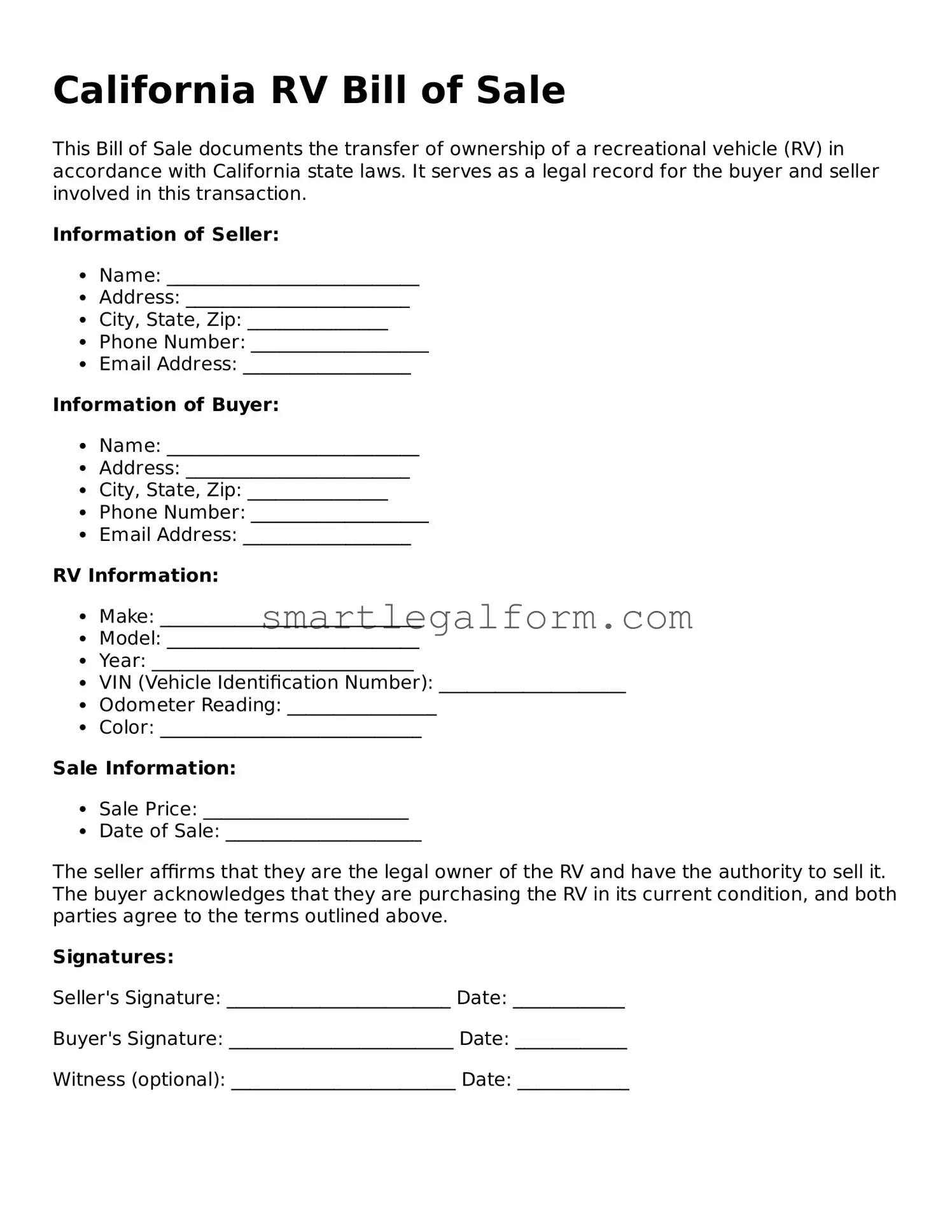Filling out the California RV Bill of Sale form may seem straightforward, but many people stumble over common mistakes that can complicate the process. One prevalent error is failing to include all necessary information. This includes the names and addresses of both the buyer and the seller, as well as a detailed description of the RV, including the make, model, year, and Vehicle Identification Number (VIN). Omitting even one detail can lead to confusion or disputes later on.
Another mistake often made is not signing the document. Both parties must provide their signatures to validate the sale. Without these signatures, the form lacks legal standing, which can create issues if either party needs to prove ownership or if disputes arise. It's essential to ensure that both the buyer and seller sign the form before any money changes hands.
Many individuals also overlook the date of the sale. This date is crucial as it establishes when the ownership transfer occurred. If the date is missing, it could lead to complications, especially regarding taxes or registration. Buyers should be aware that the date on the Bill of Sale is often used by the DMV to determine when to start the registration process.
Another common pitfall involves incorrect payment details. When filling out the form, it’s vital to specify the sale price clearly. If the amount is left blank or inaccurately reported, it can lead to tax issues down the line. California requires sales tax to be calculated based on the sale price, so clarity in this area is essential.
People sometimes fail to understand the importance of including any additional terms or conditions of the sale. If there are warranties, agreements regarding repairs, or stipulations about the condition of the RV, these should be explicitly stated. This helps protect both parties and ensures everyone is on the same page regarding the sale.
Another mistake is neglecting to provide identification for the buyer and seller. While it might seem unnecessary, including driver's license numbers or other forms of ID can help verify identities and prevent fraud. This extra step adds a layer of security to the transaction.
It’s also common for individuals to forget about the notary requirement. In some cases, having the Bill of Sale notarized can provide additional protection and legitimacy to the document. While not always mandatory, it’s a good practice, especially for high-value transactions like RV sales.
Lastly, many people fail to make copies of the completed Bill of Sale. Keeping a copy for both the buyer and seller is a simple yet crucial step. This ensures that both parties have a record of the transaction, which can be invaluable for future reference, whether for tax purposes or potential disputes.
